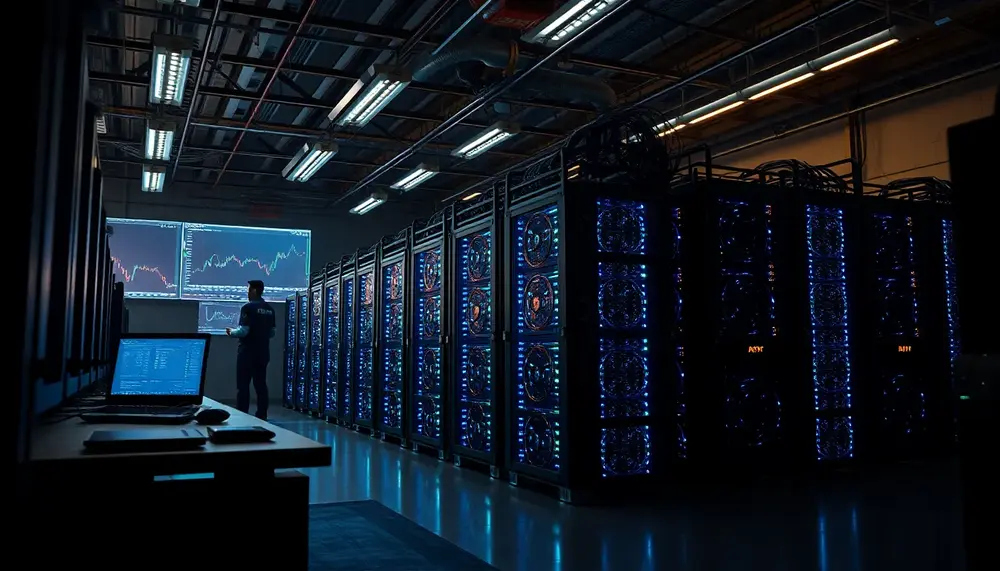Emission rate
Emission rate
Understanding the Emission Rate in Bitcoin Mining
In the world of Bitcoin mining, the term 'emission rate' holds great significance. To put it in the simplest terms, the emission rate is the speed at which new Bitcoin is created and released into circulation. It acts as a controlling factor in the flow of new Bitcoins into the market.
How is the Emission Rate Determined?
In the Bitcoin network, the emission rate isn't random; it’s pre-determined by the protocol itself. When Bitcoin was first introduced by Satoshi Nakamoto, he specified that the total number of Bitcoins that will ever exist is capped at 21 million. He also designed the system so that the rate at which these Bitcoins are mined will halve approximately every four years, in an event known as the "halving". This ensures a declining emission rate over time until all Bitcoins are mined.
Emission Rate and Its Impact
A lower emission rate means that fewer Bitcoins are entering circulation, which can lead to increased demand if the usage outpaces new supply. This concept, akin to digital scarcity, is thought by many to underpin Bitcoin's value and its potential as a digital 'store of value'.
Monitor the Emission Rate
Keeping an eye on the Bitcoin emission rate is important for miners and investors alike. The factors such as block reward halving and total supply cap can have a direct influence on the price of Bitcoin. By understanding the emission rate, one can better anticipate potential market movements and make more informed decisions.
Blog Posts with the term: Emission rate

Grin Coin Mining leverages the Mimblewimble protocol for enhanced privacy and decentralization, making it appealing to miners who prioritize anonymity. This guide covers essential strategies from setting up a Grin wallet to choosing mining software and configuring your rig for...

Kaspa Mining utilizes blockDAG technology for faster transactions and scalability, with a mining algorithm that promotes hardware inclusivity and decentralization. The project is community-driven without ICOs or pre-mining, featuring a unique monthly halving emission schedule to reduce market volatility. Selecting the...

The article compares Bitcoin and Monero mining, highlighting their differences in blockchain transparency, supply limits, hardware requirements, energy consumption, and profitability factors. It explains that while Bitcoin requires specialized ASICs for mining and has a fixed supply with halving events...

Grin is a privacy-focused cryptocurrency that uses the Mimblewimble protocol, and this article guides users through selecting the best Grin mining apps for both beginners and advanced miners. It highlights key features to look for in these apps, such as...

Grin is a privacy-focused cryptocurrency using the Mimblewimble protocol, launched in 2018. This article analyzes Grin mining's costs and benefits for 2023, covering hardware requirements (GPUs like AMD RX 6900 XT and Nvidia RTX 3090; ASICs like Innosilicon G32-1800), software...

Kaspa Mining Coin introduces a new cryptocurrency leveraging BlockDAG technology for enhanced scalability and transaction speed, promoting decentralization with no pre-mined coins. It offers miners an inclusive community and a fair mining algorithm (kHeavyHash), while its emission schedule aims to...

The KS0 miner offers a hashrate of 100 Gh/s with an energy consumption of 65 W, balancing power and efficiency to maximize cryptocurrency mining returns; however, profitability is influenced by electricity costs and market conditions....

Grin, a privacy-focused cryptocurrency with an 83% annual inflation rate, aims for wide distribution and has stable daily transactions of around 2,500. Despite challenges like limited exchange listings and current bearish market conditions, its decentralized development may lead to potential...

Grin (GRIN) is struggling at all-time lows with a $20 million market cap and limited exchange listings, but its unique privacy features may offer future growth potential. The cryptocurrency's high inflation rate of 68% per year and low transaction fees...

